The experts in boutique travel To Peru and South America
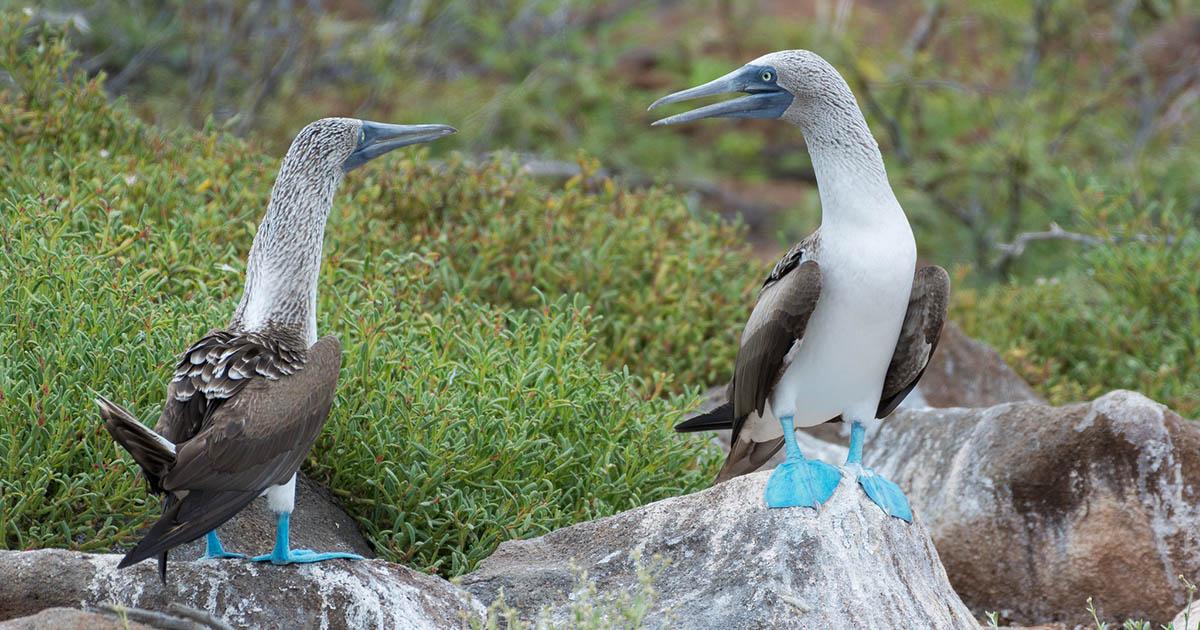
The Galapagos archipelago is an enchanting destination, attracting flocks of tourists from all over the planet. People travel to the Galapagos Islands to experience the unique flora and fauna, much of which is endemic. However, being an isolated destination that sits 563 miles (906 km) west of mainland Ecuador, it often remains a mystery to many travelers before they arrive. The Galapagos is made up of 127 islands, islets, and rocks and are inhabited by almost 9,000 different species. On top of that, there are many cruise ship itineraries, day tours, planes, and ferries that transverse the archipelago. With so many options to choose from, it is easy to feel daunted when planning how to visit Ecuador and the Galapagos Islands. Read our full list of Galapagos travel tips and learn how to best visit the Galapagos Islands on your next trip.
Cover photo by Kuhnmi, used under CC BY 2.0 / Cropped and compressed from original.
The only way to enter the Galapagos is to first fly to mainland Ecuador. This is because there are no international flights to the Galapagos. There are, however, direct flights from the US and Europe to both the Andean capital Quito and port-city Guayaquil. While in Quito, consider adding a few days to your itinerary to explore Quito’s old town and gorgeous colonial architecture. Additionally, a large portion of the country is covered by the Amazon rainforest, meaning exploration possibilities are endless.
There are connections to the Galapagos from both Quito and Guayaquil. Some flights from Quito include a short stop in Guayaquil and then continue on to the Galapagos. As of 2020, there are two airlines that operate this route – LATAM and Avianca.
Two Galapagos airports connect the archipelago to mainland Ecuador. The most common port of entry is Seymour Airport (GPS), located on the small island of Baltra. Your cruise company or tour operator will greet you at the airport and transfer you to Santa Cruz. The journey involves a short ferry ride and a 40-minute drive to Puerto Ayora. From there, you will either board your cruise ship or check in to your Galapagos hotel. Another option is to fly to San Cristobal Airport (SCY) on San Cristobal Island. This airport is mere minutes away from the center of Puerto Baquerizo Moreno, the capital of the Galapagos Islands.
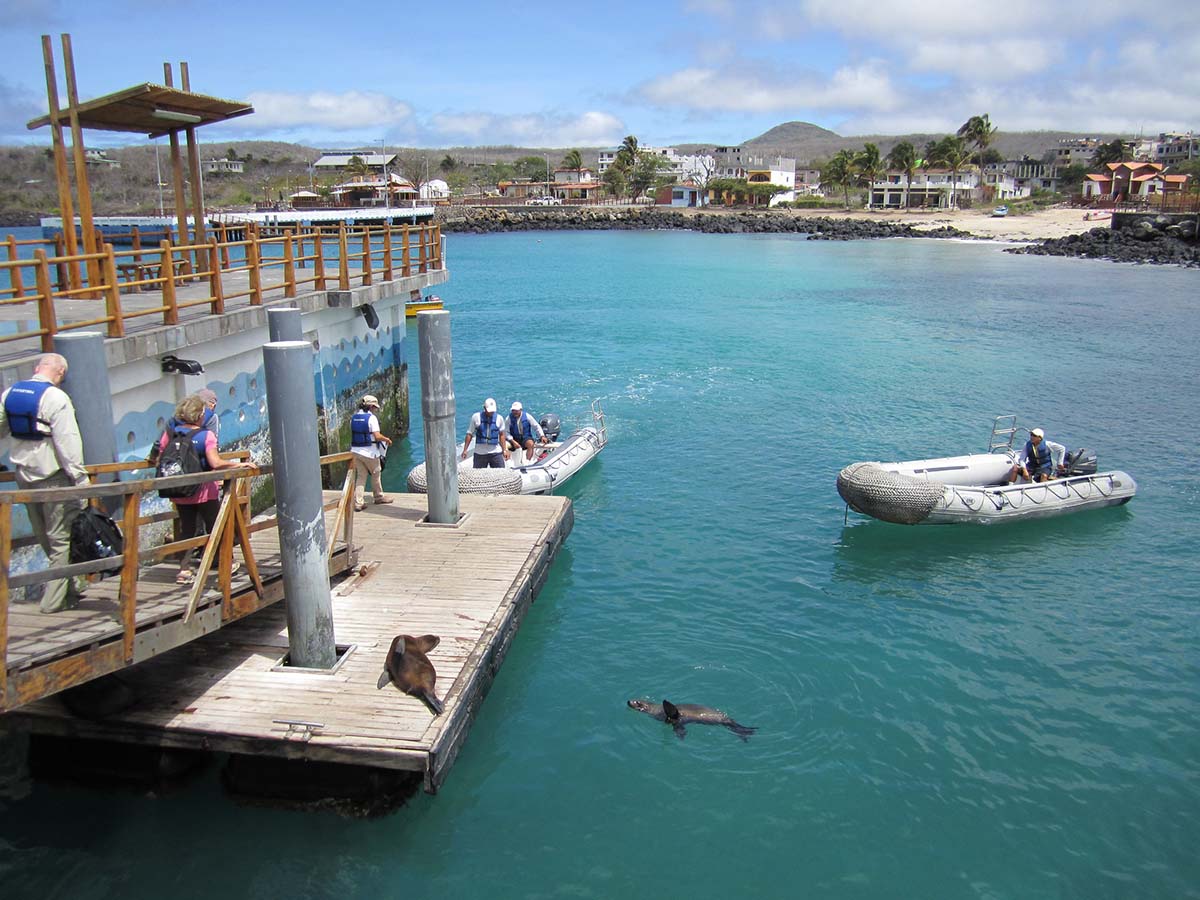
Travelers often debate whether to take a cruise or opt for a land-based “island hopping” package. This is one of the most important decisions when planning your Galapagos trip. Both modes of travel have advantages and disadvantages. Below you will find more information about these options to help you decide which best fits your personal travel style.
On cruise ships, passengers travel to new islands each night. The cruise organizes excursions in small groups to visit the island’s main attractions. After a day of exploring, return to the boat and sail to the next island. Choose one of several pre-made itineraries, ranging from 4-day to 8-day trips. Each of them follows a different route to visit specific islands.
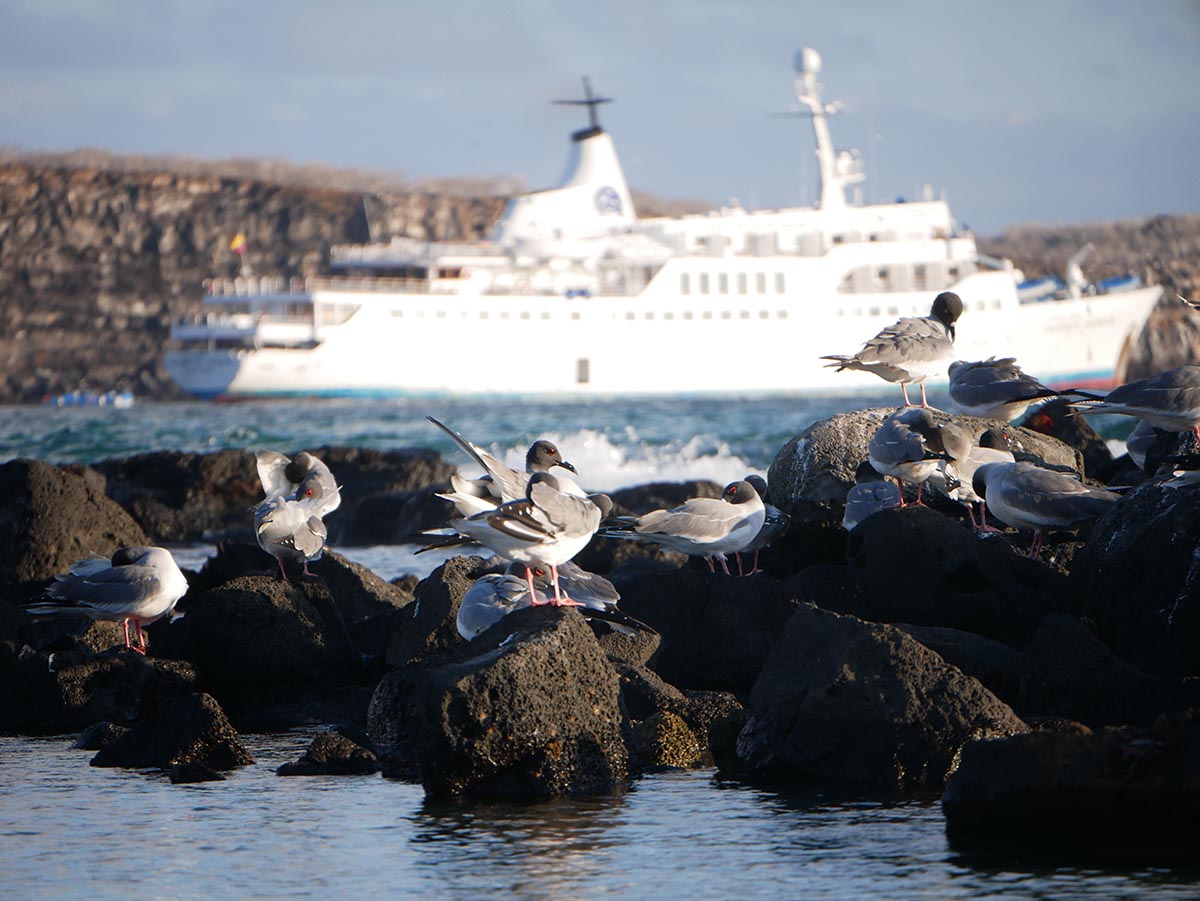
On land based Galapagos tours, you will stay overnight at a hotel on one of the inhabited islands. Each day your Galapagos guide will take you on an organized day-trip. Aside from exploring your base island, you will also take boat trips to other nearby islands. After your Galapagos excursions, you will be dropped off at your hotel. Puerto Ayora on Santa Cruz is the most common base due to its wide selection of hotels. However, San Cristobal or Isabela have some accommodation options as well. You can switch between these main islands by taking a ferry or plane.
Galapagos Tours:
There are several noteworthy Galapagos luxury hotels to choose from on a land-based trip. Get inspired by taking a look at the following options.

Av. Charles Darwin, Puerto Ayora, Santa Cruz Island
Km. 18 Via Puerto Ayora-Baltra Isla, Santa Cruz Island
Punta Estrada s/n, Santa Cruz Island
Av. Charles Darwin y Piqueros, Puerto Ayora, Santa Cruz Island
Avenida Charles Darwin & Thomas de Berlanga, Puerto Ayora, Santa Cruz Island
In truth, there is not a “best time” to visit the Galapagos, which is considered to be a year-round destination. The dry equatorial climate of the archipelago creates mild weather conditions with only small variations. The archipelago experiences two distinct seasons. The dry season from June to December and the rainy season from January to May. Continue reading to determine which time of the year might suit you best. You can also consult the best month for spotting different species on this Galapagos Wildlife Calendar.
The dry season is sometimes called the “Garua” season due to the cloudy mist that forms in the mornings. As soon as the sun comes out, the fog clears, and the rest of the day is sunny, with very little precipitation. On the other hand, the Humboldt Current circulates cold water during this time. Thus, air and water temperatures are cooler. A wetsuit is needed for snorkeling and other water-based activities. In the evenings, temperatures decrease and it is highly recommended to wear a jacket or coat. Also, keep in mind that the Galapagos high season is from June to August and when there will be the most crowds.
During these five months, there is more precipitation than the rest of the year. That being said, this usually means light afternoon showers. If you pack a waterproof jacket, the rain is unlikely to impact your daily activities. The benefit of traveling during this time is that the air and water temperatures are warmer. This creates better conditions for swimmers and snorkelers.
While all islands have much to offer, some are notable for their unique plants, wildlife, or history. Some islands are also better connected and easier to access than others. Read below about five islands that may be of particular interest to travelers.
Santa Cruz acts as the main hub of the archipelago. The island connects to Baltra airport via a ferry. This allows passengers a smooth transfer when arriving from the mainland. Puerto Ayora, located on the island’s southern coast, is the largest town of the Galapagos. As a result, it has the best tourist infrastructure with plenty of hotels, restaurants, stores, and other entertainment venues. For travelers interested in Galapagos land based tours, it’s the ideal island to use as a base.
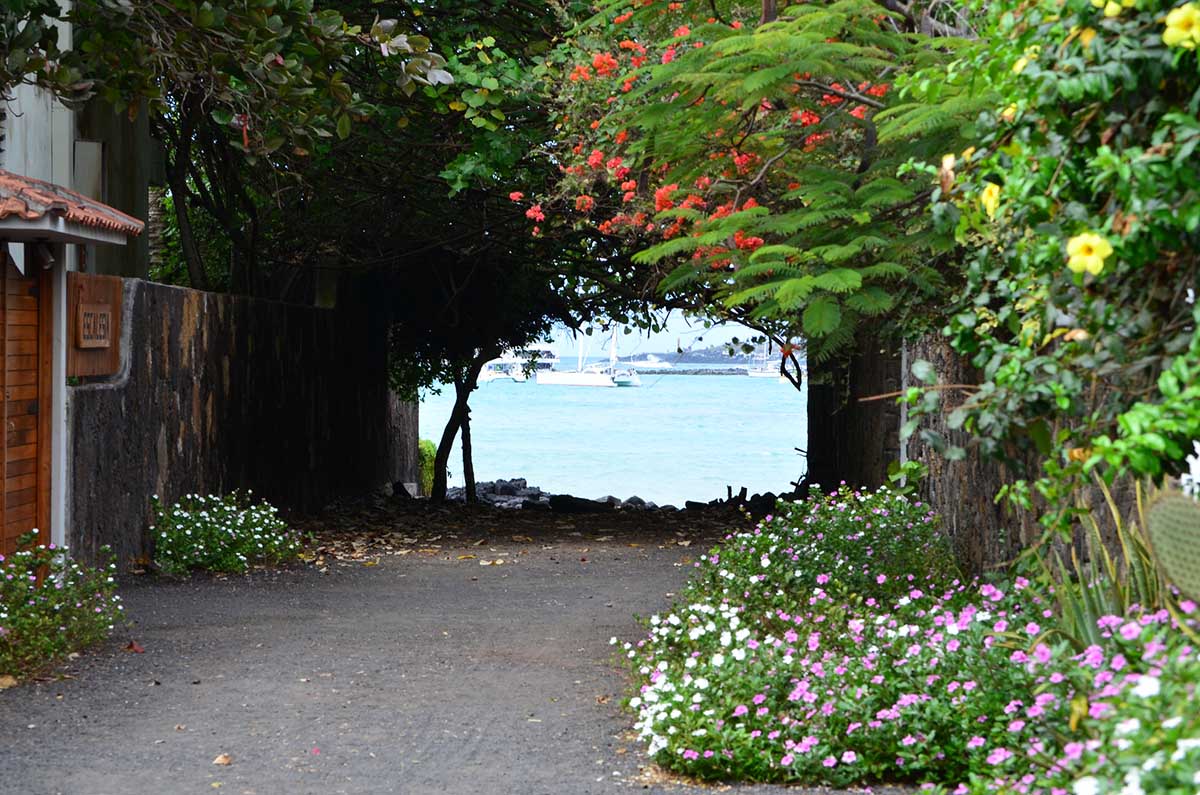
Known as “Bird Island,” Genovesa is home to nearly 90 bird species. This includes swallow-tailed gulls, red-footed boobies, frigatebirds, and finches. Located in the north, it is far from the central islands. Thus, the island can only be reached on a cruise. However, it’s well worth the journey for both experienced and novice bird watchers. If you plan to visit, choose a cruise itinerary that sails to the northern islands.
Looking for Galapagos photography tips? Travelers consider Bartolomé the most photographed island due to its incredible scenery. From atop this volcanic island take in a 360-degree view of the ten surrounding islands. You will also be able to spot the famous Pinnacle Rock. This mighty volcanic spire juts out of the ocean, setting the scene for the best Galapagos photos. Some visitors might recognize this spot as a filming location for the blockbuster movie Master and Commander starring Russel Crowe.

San Cristobal is most famous as the first island visited by the famous biologist Charles Darwin. As the closest island to the mainland, its location made it the most accessible island for people arriving by boat. Its largest town, Puerto Baquerizo Moreno, is the capital of the entire Galapagos region. Visitors enjoy exploring the San Cristobal Interpretation Center and learning more about the islands’ natural and human history. Kicker Rock, the remains of a volcanic cone, can also be observed from the island. This is another one the Galapagos’ most famous landmarks.
Isabela’s large size means it is home to a wide range of wildlife and numerous other attractions. The island was formed during a merger of six impressive volcanoes. Five of them are still active today. Sierra Negra Volcano is the second largest active crater in the world, making it a must-visit site. There are several great spots for snorkeling and diving dotted across the largest island. Some of the highlights include Punta Vicente Roca, Elizabeth Bay, and Las Tintoneras islets.
Some animals only live on specific islands. Therefore, travelers in search of particular wildlife should plan their trip accordingly. Continue reading to learn about five of the Galapagos Islands’ most fascinating and emblematic wildlife species.

The Galapagos giant tortoise is one of the most cherished animals on the entire archipelago. The average tortoise weighs up to 475 pounds (215 kg) and lives over 100 years. Today you can find these gentle giants on five of the islands. Isabela is home to many subspecies of giant tortoise. You can learn about all of them at the Isabela Tortoise Center. There are various tortoise reserves in the highlands of Santa Cruz, such as El Chato. On San Cristobal, visit La Galapaguera. The aim of this breeding station and visitor center is to educate people and repopulate the threatened species. Santiago and Española are also home to the Galapagos giant tortoise.
Possessing a wingspan of up to 8.2 feet (2.5 m), the Waved albatross is the largest bird in the entire archipelago. Its mating dance is most peculiar, involving waddling, bill circling, and making strange noises. Once a pair has bonded, they remain mates for life. Española island is the only place in the world where you can find a Waved albatross nest. The entire species flock there during the mating season, from April to December. Throughout the rest of the year, the Waved albatross lives on the coast of Peru and Colombia. Thus, visitors who are keen to spot this majestic bird should plan their trip accordingly.
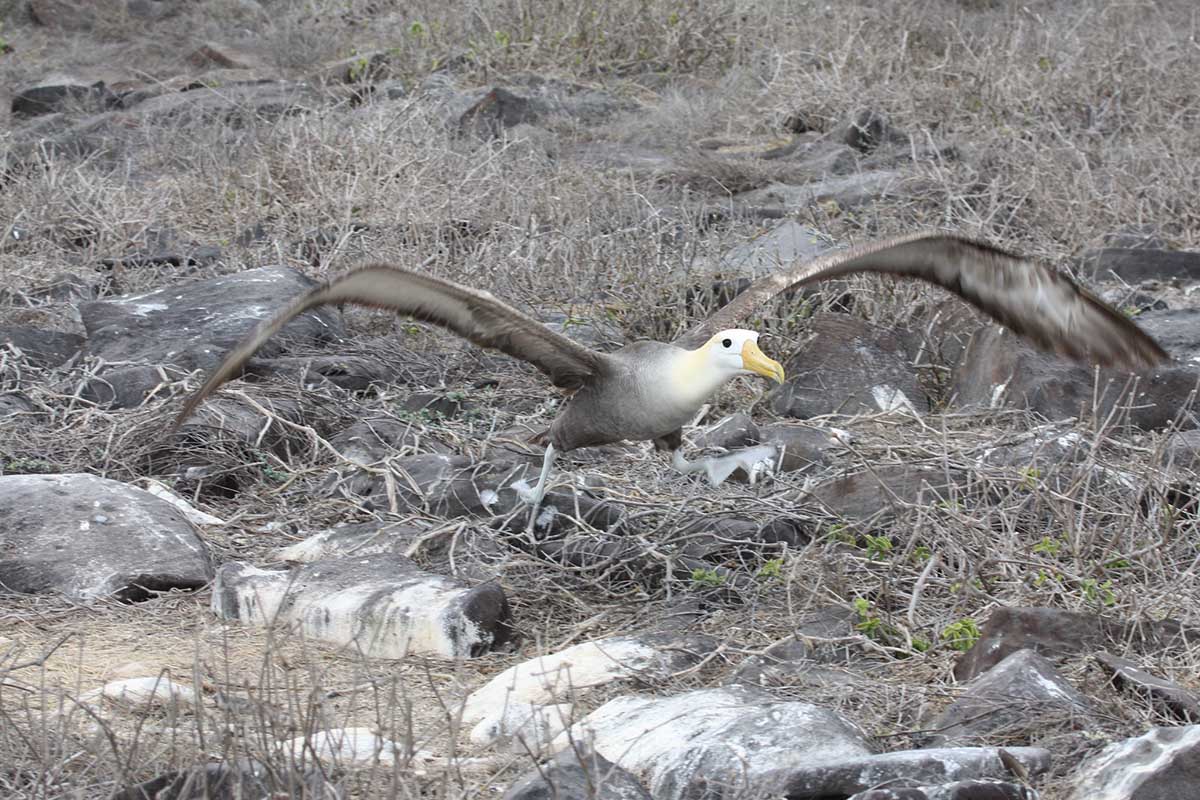
The highest concentration of Galapagos penguins is on the western islands, primarily on Fernandina and Isabela. The Equator passes through the northern tip of Isabela Island, meaning Galapagos penguins are the only penguin species to live in the Northern hemisphere. Although just barely! They are able to survive due to the cold waters brought in by the Humboldt current. You can also find small colonies of Galapagos penguins on Santiago, Floreana, and Bartolomé, swimming at the base of Pinnacle Rock.
The distinct blue color of the Blue-footed booby is an evolutionary mechanism. The males display their feet during their mating dance to attract a female partner. The more vivid their color, the more likely they are to find a mate. It is common for travelers to spot Blue-footed boobies on most of the islands. However, head to their breeding ground on North Seymour island for the best chance of seeing their mating dance. Meanwhile, finding Red-footed boobies is a less common occurrence. Genovesa, known as “Bird Island’, is always a safe bet for bird watching. Punta Pitt on San Cristobal is where you can find Blue-footed, Red-footed, and Nazca boobies all nesting together.
This bird is particularly intriguing for visitors to the Galapagos because of its inability to fly. Researchers believe that it lost this ability due to lack of land predators. Instead, the Flightless cormorant has evolved into an excellent swimmer. Because of this, they do not migrate and thus can be spotted on the archipelago year-round. It is only found on Isabela and Fernandina’s beaches in the western part of the Galapagos. Opt for a cruise that visits these islands if you would like to come face to face with this peculiar bird.
The Galapagos are full of incredible natural wonders. This can sometimes overshadow the significant human history. Since their discovery in 1535, they have been visited by pirates, whalers, explorers, and other notable figures. Today, you can learn all about the archipelago’s colorful history by visiting some of the following notable landmarks.
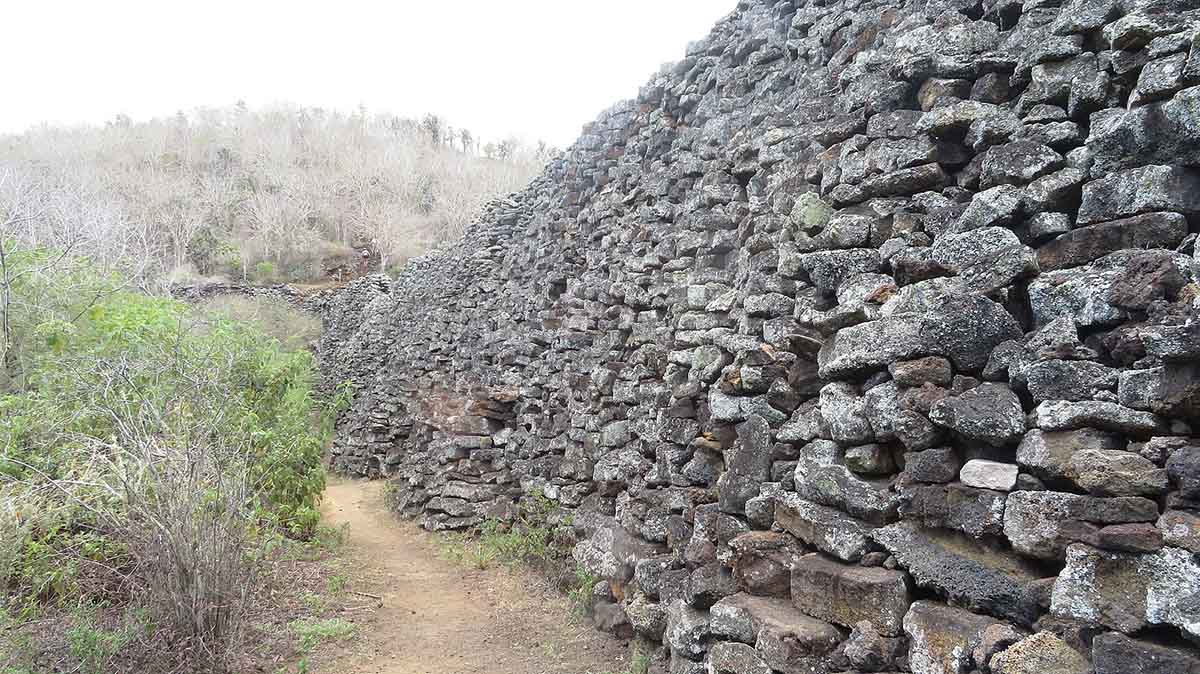
The Wall of Tears or “Muro de las Lagrimas” is located on Isabela. It is an important landmark that reminds visitors of the archipelago’s dark past. Back in the 1940s and 50s it was a penal colony. As punishment, prisoners were forced to collect lava rocks and construct a purposeless wall. Many of them became injured or died as a result of the grueling work. The wall sits approximately 4 miles (6.5 km) east of Puerto Villamil. You can pay a visit to this somber site by walking or renting a bike.
Whalers and other travelers used this spot as a makeshift post office in the 18th century. They erected a barrel on Floreana in which they left letters addressed to loved ones at home. Any seamen traveling back home would take some letters from the barrel with them. They would then be able to deliver them on someone else’s behalf. This ingenious system is still used today by tourists. Leave your letter there and wait to see whether someone else delivers it – no stamps required! You could also help a fellow traveler out by delivering their letter.

The Charles Darwin Research Center is not just a tourist attraction. The Charles Darwin Foundation inaugurated it in 1964 as their base of operations. There are over 200 scientists, researchers, and volunteers working at this facility. Its aim is to study, protect, and preserve the wildlife of the archipelago, especially the endangered species. In fact, the foundation reintroduced the Galapagos giant tortoise to several islands when it was on the brink of extinction. Visit the research center in Puerto Ayora on Santa Cruz to learn more about their heroic conservation efforts.
This modern museum is located in Puerto Baquerizo Moreno on San Cristobal. It provides a comprehensive overview of both natural and human history. Spend some time perusing the informative exhibit on the colonization and settlement of the Galapagos. Signs in English and Spanish explain a chronological overview of the events that shaped the islands’ history. You can also find information about the modern-day Galapagos. This exhibit covers some of the challenges and solutions to the many problems faced by its inhabitants.
Tagus Cove is a visitor site located on the Western coast of Isabela that can only be accessed by boat. It was named after a British boat from 1814 that was in search of giant tortoises. Since then, many other characters throughout its history, including whalers, pirates, and marine have passed through. Many of these explorers have left their names etched on the rocky cliffs surrounding the bay. The earliest markings date back to 1836, but you will also find graffiti by US marines from the 1990s. Such remnants of human history, along with excellent snorkeling opportunities, draw visitors to this enchanting spot.
Many travelers to the Galapagos often overpack. Soon after arrival, they realize that many of the items in their suitcase only take up unnecessary space. Other minimalist travelers don’t come prepared for the daily nature excursions and wildlife spotting. Read through this Galapagos packing list for tips on what to bring with you to the archipelago. Equally, this list also provides recommendations on which items are best left at home.
The Galapagos National Park Directorate (GNPD) provides a list of fourteen rules that visitors should obey at all times. Below you will find a brief summary of the six most important points. For more detailed information, read the entire list of rules.
Done correctly, tourism can have a positive impact on the inhabitants of the Galapagos, both local people and wildlife. There are several ways you can contribute to the social, economic, and environmental sustainability of the Galapagos. Following these basic practices will allow future generations to enjoy this otherworldly destination in all its glory.
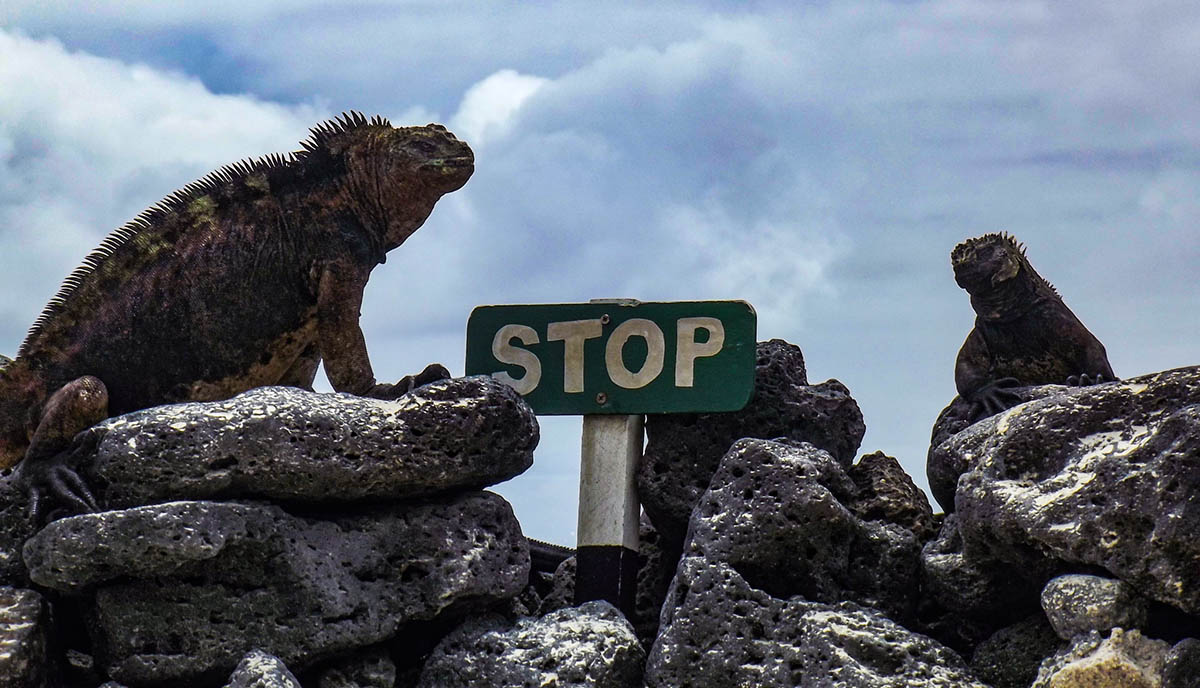
Whether by cruise or by land, there are many ways to explore the Galapagos archipelago. Besides the stunning scenery and unique wildlife, there is also a unique human history waiting to be discovered. Armed with all these Galapagos travel tips, you can now continue to plan your Galapagos trip. Soon you too will be part of its history.

Passionate global traveler, Mikey, born in Prague to Czech-US parents, explored Latin America, taught in Salvador, studied in the UK, and calls Peru home.

Over 500 miles from the mainland, the Galapagos Islands are at the very top of the list of must-see places in Ecuador. The diversity of species seen on the Galapagos Islands is rivaled by few places in the world. There are so many unique species of flora and fauna scattered across the archipelago that to ask which are the best Galapagos islands to visit would be unjust. Instead, we have put together our list of top things to do in the Galapagos Islands that are sure to entice all types of travelers visiting a range of islands.
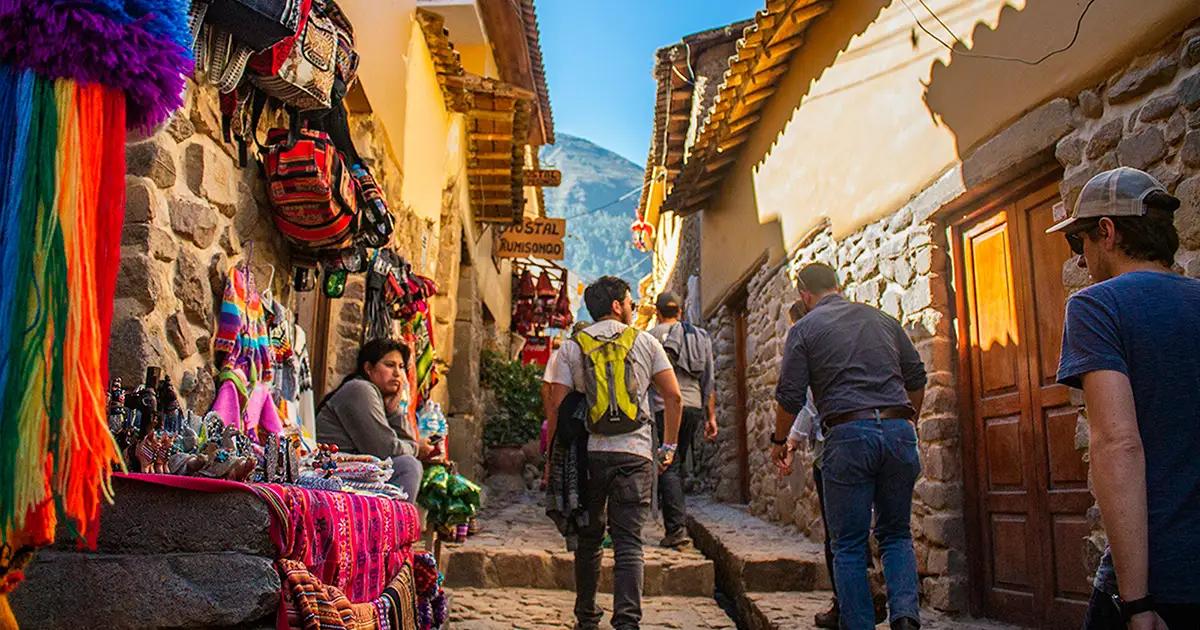
Discover the incredible things to do in Cusco, the historic heart of Peru. Once the capital of the Inca Empire, Cusco is now a treasure trove of Incan and colonial architecture, blended seamlessly with modern culture.